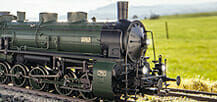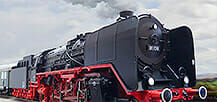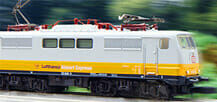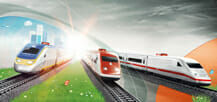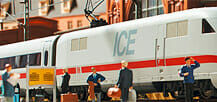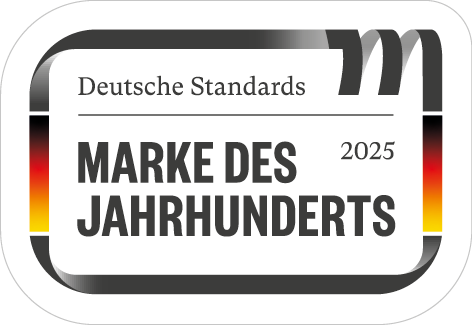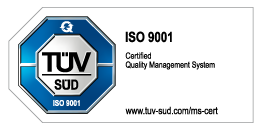Electric Locomotive.
Prototype: German Railroad Inc. (DB AG) class 120.1 general-purpose locomotive. Regular production version.
Most Important Facts
| Article No. | 37539 |
|---|---|
| Gauge / Design type | H0 / 1:87 |
| Era | V |
| Kind | Electric Locomotives |
Check with your local dealer Find Dealer
Highlights
- Engineer's cabs with interior details and lighting.
- All of the lights are maintenance-free, warm white LEDs.
- Digital sound: locomotive whistle and station announcements.
-
Product description
Model: The locomotive has an mfx digital decoder and comes from the factory with sound functions that can be turned on and off. It also has controlled high-efficiency propulsion. 2 axles powered. Traction tires. The headlights are maintenance-free, warm white LEDs. They will work in conventional operation and can be controlled digitally. The engineer's cab lighting can also be controlled digitally. The locomotive has separately applied grab irons.
Length over the buffers 22.1 cm / 8-11/16".Find more Märklin explanation videos on our YouTube Channel
Spare parts for our articles can be found here in our spare parts search.
-
Publications
- New items brochure 2008 - Product programme 2008/2009 - Product programme 2009/2010 - Product programme 2010/2011
-
Prototype information
The Three-Phase Pioneer. The class 120 marked the technological breakthrough to three-phase current propulsion systems. This principle carried with it the promise of compact, largely non-wearing motors without commutators, wear rings, brushes, and mechanical contacts. Because a broad range of torque and speed could be mastered with three-phase current technology, the performance specifications for this new development were formulated rather like a long wish list. The class 120 was intended to pull 200 km/h / 125 mph fast InterCity trains and 5,400 metric ton freight trains, and was also to be equipped with push/pull controls and electric regenerative brakes. In 1977, the DB ordered five experimental units that were exhaustively probed on test stands, during test runs, and in operational use. Startup, tractive effort, acceleration, running characteristics, braking performance, power requirements, and stability under a load were part of the program. Comparison tests with other makes of locomotives as well as start-up tests on the Lötschberg and Semmering grades confirmed the performance capabilities of the technology. The speed record was 265 km/h / 166 mph. New developments flowed in during the experimental phases such as microprocessors for faster control and monitoring. Components were improved again and again until all five units were brought to the same technical level in 1982 and were pronounced ready for regular production. During the development phase of several years the procurement policy changed. Instead of all-round locomotives, special locomotives were again preferred on the basis of common development platforms with many parts identical in construction. Only a first production run of 60 units of the class 120 was purchased. The prototypes continue to be used for test purposes, and the regular production locomotives prove themselves in daily operation.
-
Digital Functions
Control Unit Mobile Station Mobile Station 2 Central Station 1/2 Central Station 3/2*
Mobile Station 2**Headlight(s) Engineer’s cab lighting Station Announcements Horn Direct control * New features of the Central Station 2 (Part No. 60213, 60214 or 60215) with the software update 4.2
** New features of the Mobile Station 2 (Part No. 60657/66955) with the Software Update 3.55
